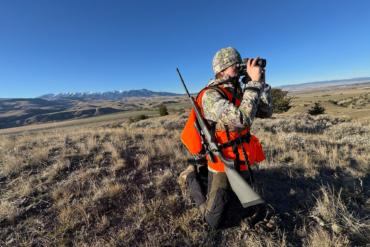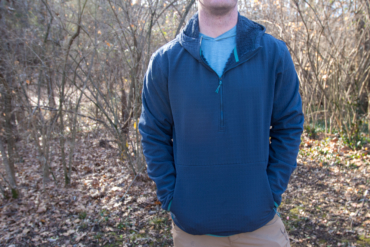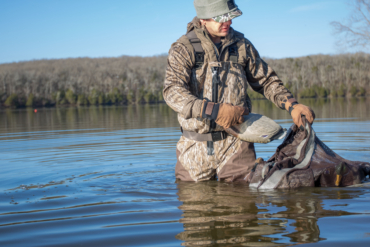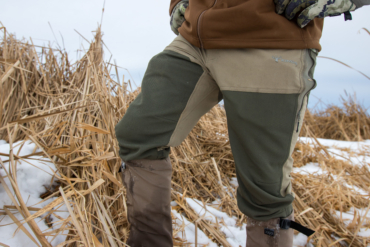Newly updated — the Patagonia Torrentshell 3L gets a big upgrade in the waterproofing department.
We love a good comeback story, but the truth is that the Torrentshell rain jacket hasn’t ever fallen out of style. It has only gotten better. One of Patagonia’s most popular jackets, the Torrentshell 3L Jacket has staying power, and for good reason.
In its current adaptation, the Torrentshell gains a half layer in its proprietary Patagonia H2No membrane over its predecessor, and with it a bump in overall waterproofing and durability. But more so than that, it’s the jacket’s overall versatility and accessibility that has won us over.
We tested the latest version of the Torrentshell 3L jacket in Washington state’s Cascades this spring. We found that at its price range, there are few other jackets that can compete with the value this jacket provides. It may not be the most breathable or packable rain jacket, but for general hiking and everyday use, it’s easily one of the first we’d reach for.
In short: At $150, the Torrentshell 3L Jacket undercuts plenty of other jackets — and beats them out in a good number of metrics. A newly updated three-layer H2No waterproof membrane brings this classic piece into the present, and makes it a viable choice for anyone looking for a grab-and-go shell.
Patagonia Torrentshell 3L Jacket Review

Torrentshell 3L: Specs
- Waterproof membrane: Proprietary H2No three-layer
- Waterproof rating: 20,000mm/24 hrs.
- Breathability rating: Unpublished
- Pit zips: No
- Fit: Regular
- Weight: 13.9 oz.
- Price: $150
Waterproofness
Brewed up especially for Patagonia, the proprietary H2No Performance Standard technology used in the Torrentshell specs out at 20,000mm waterproofness, which proved in our testing to be far sufficient to keep out nasty downpours and gales.
The new three-layer membrane adds an additional tricot backing, which improves moisture wicking and helps keep the membrane clear of body oils that would otherwise block and impede waterproof performance. We see this as an excellent update to the Torrentshell jacket.
This additional layer does come with a penalty in weight and bulk (our two primary complaints), but considering that most other competing rain jackets utilize a 2.5-layer membrane, you gain a considerable amount of waterproofing for the tradeoff.
Jackets like the Outdoor Research Dryline or the Mountain Hardwear Stretch Ozonic both come in at a similar price point but won’t provide the same long-lasting waterproofness.

Breathability
There are no published breathability ratings for H2No waterproof membranes (trust us, we’ve scoured the internet). But, in testing, we found the Patagonia Torrentshell 3L’s ability to breathe as better than other 2.5-layer jackets, and about as good as other three-layer shells.
Compared to a jacket like the 66 North Snaefell, which uses a Polartec NeoShell three-layer membrane, the difference is noticeable, but that jacket runs $375 more. And for the money, the Torrentshell is absolutely capable.
During difficult climbs, we needed to vent with the pit zips, which isn’t uncommon, and we were thankful for the dual-zippered underarm openings to keep air flowing.
Comfort
With a stiffer feel than some other rain jackets, the Torrentshell feels like a rain jacket of old, and does produce a bit of a crinkle when in use. We’re unsure if this is due in part to the 100% recycled (50% pre-consumer, 50% post-consumer nylon) face fabric, but it makes sense to chalk it up to that. We’d imagine with some use this jacket would break in and become more supple.
The added wicking textile on the interior of the jacket does increase the overall comfort and feel, but the shell is missing a few key niceties (soft chin guard, please!).

Weight & Packed Size
At 13.9 ounces, the Torrentshell isn’t your wispy trail runner’s emergency shell, but it’s not designed to be. Patagonia’s own Storm10 Jacket uses the same three-layer version of its H2No waterproof membrane, but it comes in at a svelte 8.3 ounces overall. The Torrentshell’s weight and bulk are largely due to its 50D nylon ripstop face fabric and burlier construction.
Patagonia was certainly channeling its Wear it For Life ethos and aimed to create a jacket that would stand up to seasons of abuse — and they nailed it with the Torrentshell.
Zippers, Pockets, and Hood
As a more budget-minded jacket, the Torrentshell doesn’t make use of any waterproof zippers that are seen in higher-end rain shells. Instead, the main zipper sports a unique three-fold storm flap arrangement that encases the zipper and seals out weather, which we found to work well. The same storm flap design is found on the hand pocket zippers and pit zips.
The right-hand pocket has a double-sided zipper and carabiner loop, meaning the entire shell can be stuffed into it for ease of transport. The hood, while not helmet-compatible, did fit well and is two-way adjustable with a laminated brim.

Sustainability & Durability
Patagonia’s decision to make the Torrentshell out of its three-layer H2No waterproof membrane will certainly up the durability of the jacket in the long run, along with the thicker 50D face fabric. We struggle to think that anything but the most brutal treatment would begin to wear down this jacket, and in testing, we couldn’t put a scratch on it.
We’ve previously hailed the Torrentshell as being highly sustainable, but also understand there’s no free lunch. Reaching for a jacket that has tipped the scales in any one direction typically means it’s more liable to suffer in another metric.
For sustainable jackets, that often boils down to overall performance. Rain jackets of old used all types of petrochemicals to achieve their waterproof performance. While Patagonia is making moves to use only fluorocarbon-free DWR finishes in all of its outerwear by fall 2022, the Torrentshell unfortunately still uses the old stuff.
Conclusion
The Patagonia Torrentshell 3L Jacket would make an easy choice for anyone looking to grab a rain jacket and go. The newly updated three-layer H2No waterproof membrane greatly improved this already classic jacket, and places it head and shoulders above others in the same range.
A highly sustainable build — featuring 100% recycled face fabric, Fair Trade certified sewing, and a PU membrane that incorporates 13% bio-based content — rounds out this everyday shell. The jacket does make some concessions, namely in average breathability, bulkier packed size, and stiffer fabric. But at the $150 price point, few jackets come close to touching it in terms of accessible performance.







